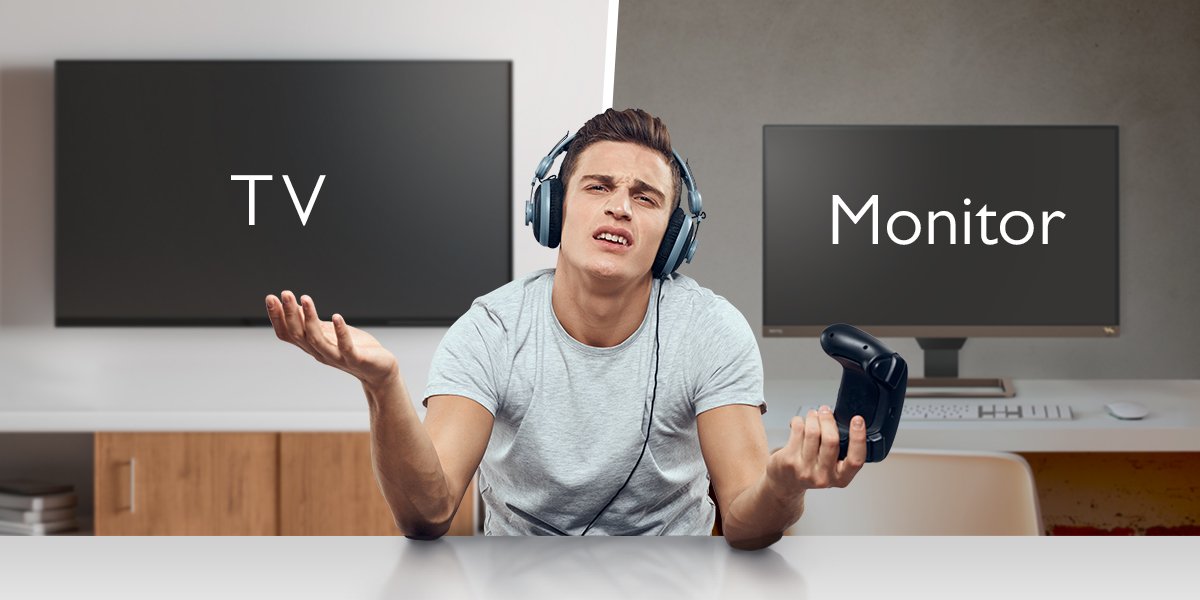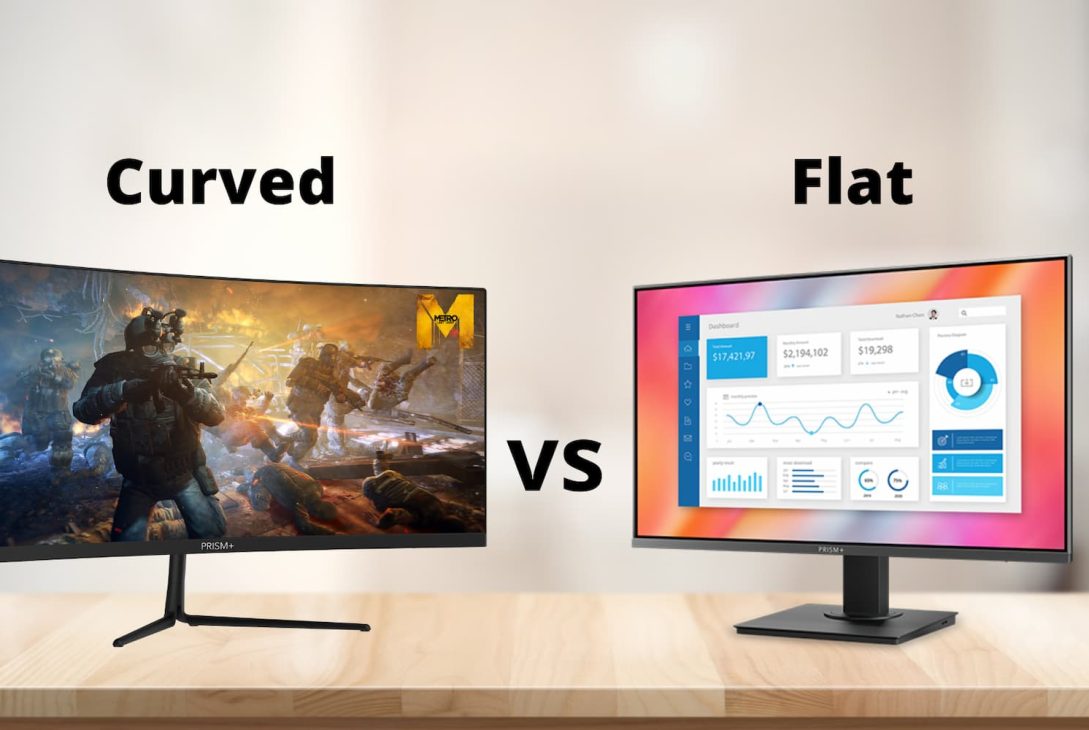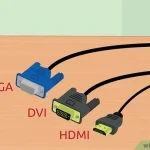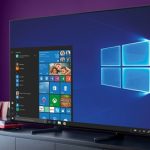Yes, a TV can be used as a computer monitor if it has the necessary input ports. Many modern TVs come equipped with HDMI or VGA ports, allowing them to be connected to a computer for use as a monitor.
This can be a cost-effective option for those looking to create a larger display for work or entertainment purposes. However, there are some factors to consider such as screen resolution and input lag when using a TV as a monitor.
We will explore the benefits and limitations of using a TV as a computer monitor and provide tips for optimizing the viewing experience. Whether you’re a gamer, designer, or regular computer user, understanding how to effectively use a TV as a computer monitor can enhance your overall computing experience.

Credit: www.benq.com
The Rise Of Smart Tvs
The advancement of technology has led to the rise of Smart TVs, which not only offer a dynamic viewing experience but also come with functionalities that make them compatible with a variety of devices, including computers.
Smart Tvs As Computer Monitors
Smart TVs can indeed be used as computer monitors, allowing users to enjoy the benefits of a large, high-definition display for tasks such as video editing, gaming, and productivity.
Benefits Of Using Smart Tvs As Monitors
- Increased Screen Size: Smart TVs provide a larger display area compared to traditional computer monitors, enhancing the viewing experience.
- High Definition Resolution: Enjoy crisp and clear visuals with the high-resolution displays found in Smart TVs.
- Multiple Connectivity Options: Smart TVs offer various connectivity options, making it easy to connect your computer and use the TV as a monitor.
- Smart Features: Access smart features such as streaming services, apps, and voice control while using your TV as a computer monitor.

Credit: www.autonomous.ai
Technical Considerations
When considering using a TV as a computer monitor, there are several important technical factors to keep in mind. Here we explore key considerations under two main headings: Resolution and Display Quality and Input Lag and Refresh Rates.
Resolution And Display Quality
- Choose a TV with a high resolution for clear and crisp visuals.
- Opt for a 4K resolution for enhanced image detail and sharpness.
- Pay attention to the display quality to ensure vibrant colors and optimal brightness levels.
- Consider factors like contrast ratio and viewing angles for an immersive viewing experience.
Input Lag And Refresh Rates
- Check the input lag of the TV to avoid delays between your actions and on-screen response.
- Look for a TV with a high refresh rate (e.g., 120Hz or higher) for smooth motion during gaming and fast-paced content.
- Consider response time to minimize blurring and ghosting effects.
By paying attention to these technical considerations, you can ensure a seamless and high-quality experience when using a TV as a computer monitor.
Productivity And Creativity
When it comes to using a TV as a computer monitor, it’s essential to consider how this setup can impact your productivity and creativity. Whether you’re working on various tasks simultaneously or engaging in graphic design and content creation, the capabilities of your display play a significant role in your overall performance.
Work And Multitasking
Using a TV as a computer monitor can enhance your productivity by offering a larger screen space, allowing you to work on multiple tasks simultaneously. With a larger display, you can arrange windows side by side without compromising visibility, making it easier to manage various projects at once. The ability to view spreadsheets, documents, and emails all at once can streamline your workflow and ultimately boost your productivity. Moreover, the larger screen can reduce eye strain, enabling you to work for longer durations without discomfort.
Graphic Design And Content Creation
For graphic design and content creation, a TV used as a computer monitor can provide a more immersive and detailed workspace. The larger screen size and high resolution can showcase intricate details, color nuances, and design elements with greater clarity. This can be especially beneficial for professionals who work with complex visual projects such as photo editing, video production, or 3D modeling. A TV’s enhanced color accuracy and contrast can contribute to more accurate and vibrant visual creations, elevating the quality of your work.
Gaming And Entertainment
Looking to enhance your gaming and entertainment setup? Explore the possibility of using your TV as a computer monitor for immersive gameplay and a cinematic viewing experience. With the right connections and settings, this alternative can offer a larger display, vibrant visuals, and a more dynamic environment for your digital activities.
Gaming Experience
Playing video games on a computer monitor can be an incredibly immersive experience. The larger screen size and high-resolution display of a TV can enhance your gaming sessions, allowing you to fully immerse yourself in the virtual world. With a TV as a monitor, you can enjoy vibrant colors, crisp graphics, and smooth gameplay.Streaming And Multimedia Consumption
Using a TV as a computer monitor is not limited to gaming; it also offers a fantastic platform for streaming and multimedia consumption. Whether you enjoy binge-watching your favorite shows on Netflix, browsing YouTube videos, or streaming your favorite movies, a TV can provide a cinematic viewing experience. The larger screen and superior image quality make it easier to catch every detail and immerse yourself in your entertainment. Moreover, streaming platforms and multimedia players generally offer better compatibility with TVs, allowing you to seamlessly connect and enjoy content. TVs also have built-in speakers that deliver enhanced audio quality, eliminating the need for external speakers or headphones. When it comes to productivity, TVs can be beneficial as well. By connecting your computer to a TV, you can multitask more effectively by having multiple windows open simultaneously. Whether you’re working on a large spreadsheet, editing videos, or simply browsing the internet, the extra screen real estate can significantly enhance your productivity and workflow. So, whether you’re a gaming enthusiast or a multimedia lover, using a TV as a computer monitor brings an array of benefits. From an immersive gaming experience to indulging in your favorite movies and shows, a TV can elevate your entertainment to a whole new level. By maximizing screen size, image quality, and audio output, a TV as a computer monitor offers the perfect platform for an exceptional gaming and multimedia experience.Potential Drawbacks
While using a TV as a computer monitor can offer many advantages, it is important to be aware of the potential drawbacks. These include the possibility of eye strain and ergonomic issues, as well as limited functionality for specific applications.
Eye Strain And Ergonomics
Extended periods of staring at a screen, whether it be a TV or a computer monitor, can put a strain on your eyes. TVs are typically designed for viewing from a distance and may not have the same level of visual comfort as dedicated computer monitors. The larger screen size and possibly lower screen resolution could lead to eye fatigue, especially if you are sitting close to the TV.
Ergonomics is also a crucial consideration when using a TV as a computer monitor. TVs are meant to be viewed in a more relaxed position, such as sitting on a couch, rather than in the upright position commonly associated with computer tasks. This can result in uncomfortable viewing angles, neck strain, and potential back problems. Adjusting the height and tilt of a TV may be limited compared to a dedicated computer monitor, further exacerbating these issues.
Limited Functionality For Specific Applications
While most tasks can be performed on a TV used as a computer monitor, some applications may not function optimally. TVs often have a higher response time compared to computer monitors, resulting in possible lag or ghosting when displaying fast-moving content, such as video games or high-action videos. Additionally, TVs may not have the same level of color accuracy or sharpness as computer monitors, which could impact tasks that require precise color representation, such as graphic design or photo editing.
Furthermore, TVs may not have the same inputs and connectivity options as computer monitors. This can limit your ability to connect multiple devices or take advantage of specialized ports, such as USB or Thunderbolt, which may be essential for specific applications or peripherals.
In conclusion, using a TV as a computer monitor can present certain drawbacks, including potential eye strain and ergonomic issues, as well as limited functionality for specific applications. It is important to consider these factors before making a decision, and if possible, test the setup to ensure it meets your requirements.

Credit: www.pcworld.com
Frequently Asked Questions On Can Tv Be Used As Computer Monitor
Is It Ok To Use Tv As Computer Monitor?
Yes, it is fine to use a TV as a computer monitor. Just ensure compatible connectivity ports and appropriate resolution settings for optimal performance.
Which Tv Can Be Used As Monitor?
Most modern TVs can serve as monitors for computers, gaming consoles, and other devices. Just ensure it has the necessary ports like HDMI.
What Is The Difference Between A Smart Tv And A Computer Monitor?
A smart TV is a television with internet capability, allowing streaming and apps. A computer monitor is used to display computer content.
How Can I Display My Pc On My Tv?
To display your PC on your TV, you can use an HDMI cable or Miracast wireless technology. Connect one end of the HDMI cable to your PC’s HDMI port and the other end to the HDMI port on your TV.
Alternatively, use Miracast to wirelessly mirror your PC’s screen on your TV.
Conclusion
In light of the discussed factors, using a TV as a computer monitor is certainly feasible and convenient for various tasks. It offers a larger display for a more immersive experience. However, it’s important to consider the technical aspects and potential limitations to ensure a seamless integration.
With the right setup, a TV can indeed serve as a practical and versatile computer monitor alternative.









